Autumn paints New England in vibrant hues, and hidden treasures pop up in the forest. Fall mushroom foraging in New England is usually abundant, with hen of the woods, chicken of the woods, oysters, and lobster mushrooms out there waiting to be found. You may need to put on some some extra layers and go out earlier in the day, but it’s usually well worth the effort. The best time to hit the woods is a few days after a good rain; that is when mushrooms will be most abundant.
Good foraging is entirely dependent on the weather, especially during the summer months. If it was a dry year, the mushrooms usually won’t fruit or will do so in super small numbers. They’ll wait and store up their sustenance for future years when there are better climate conditions. In super wet/rainy years, the woods will literally be popping with edible mushrooms.
If this guide is missing any New England fall mushrooms, please let me know in the comments. Also, don’t miss the other New England foraging guides: Spring Mushroom Foraging in New England, Winter Mushroom Foraging in New England, and Summer Mushroom Foraging in New England.
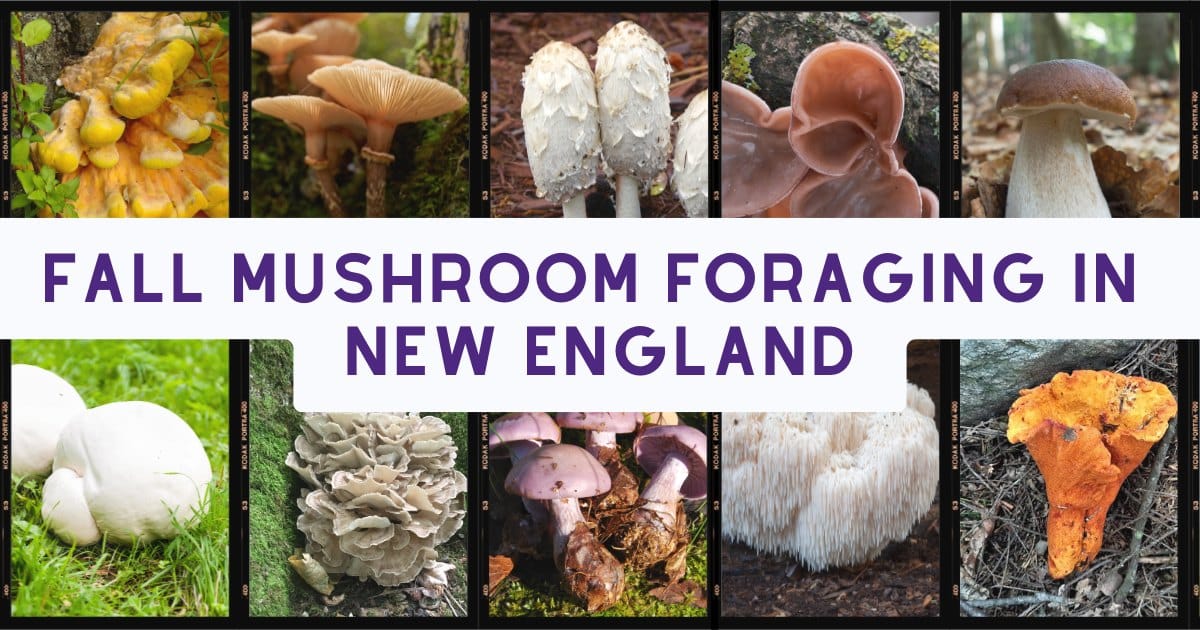
15 Fall Mushrooms To Forage In New England
Hen of the Woods/Maitake (Grifola frondosa)
Hen of the Woods grows at the base of oak trees, appearing as a circular cluster of interlocking, fan-shaped caps. Its tan-brown to olive colors often blend with fallen leaves, making it a challenging but rewarding find for mushroom hunters. Hen of the Woods can weigh up to 30 pounds! It also usually fruits in bunches around the tree and its not unusual to find 4-10 hen of the woods at once. This fall mushrooms has a rich, earthy flavor and meaty texture and is perfect for roasting, sautéing, or made into jerky.
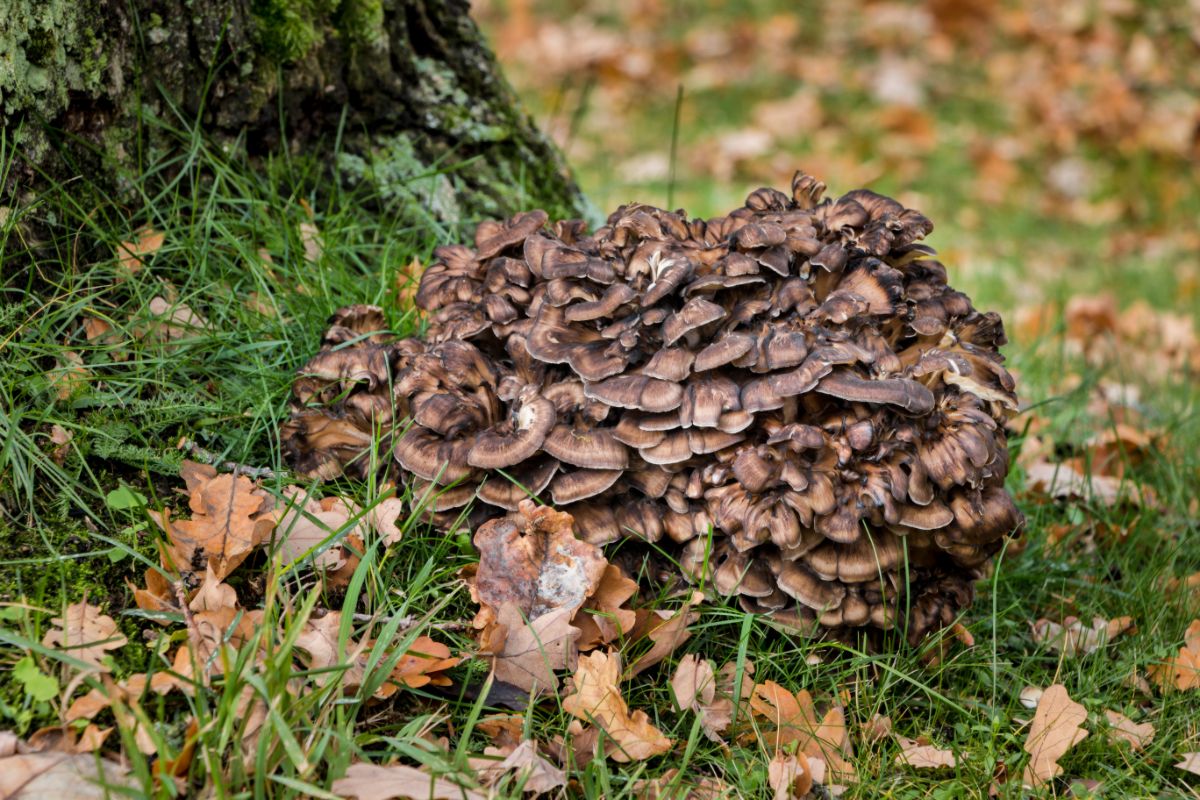
Oyster Mushrooms (Pleurotus species)
Oyster mushrooms are a versatile and delicious edible fall mushroom. These fan-shaped fungi grow in clusters on deciduous hardwoods, mainly beech and aspen trees. They have a mild, woodsy flavor and meaty texture, which is excellent in stir-fries, roasted, and used as a pizza topping. They come in various colors, from white to light brown, and have distinctive white gills running down the cap and stem. They also usually have a slightly too strong anise scent. When foraging for oyster mushrooms in New England, look for them on fallen logs or dying trees in open, leafy forests.
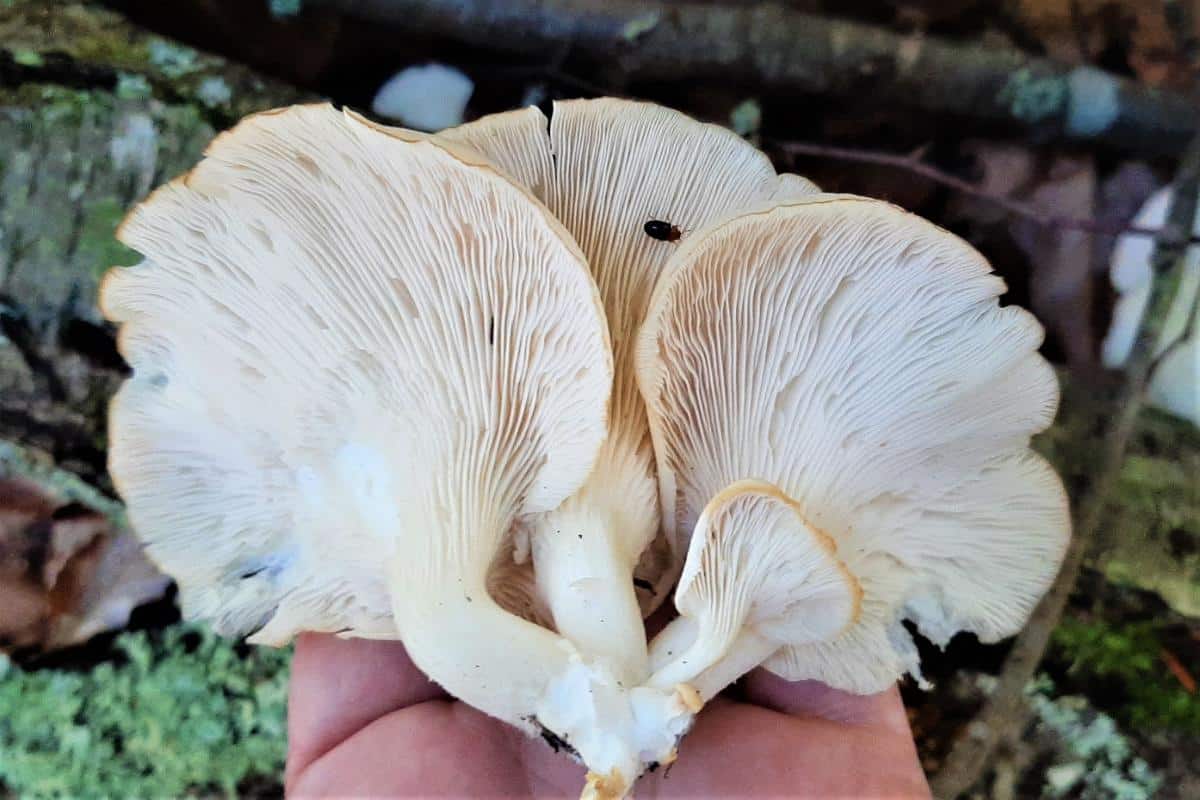
Chicken of the Woods (Laetiporus spp.)
Chicken of the Woods, also known as Sulfur Shelf, is a striking fall mushroom. Its vibrant orange or yellow color makes it easily identifiable. It grows in clusters on hardwood trees like oak and cherry and often fruits in huge groups. This mushroom gets its name from its meaty texture and chicken-like flavor when cooked. When foraging for Chicken of the Woods during fall mushroom season, look for brightly colored fan-shaped caps with wavy edges on dead or dying trees.
In New England, there are actually a few species of chicken of the woods. And not all of them are the quintessential bright orange and yellow.
- Laetiporus sulphureus – This is the classic bright orange and yellow chicken of the woods with yellow spores. It grows in dense clusters on hardwoods. It is most common on oak trees but will also fruit from poplar, willows, beech, locust, cherry, and pear.
- Laetiporus cincinnatus – While this chicken of the woods may look like it’s growing from the ground, it is actually growing from buried wood. This confuses many people as it can often be found 5-6 feet away from a tree, but rest assured, it is attached to the tree roots beneath the soil. Because it is usually growing from buried wood, it also forms a bit differently from other chicken of the woods. Instead of stacked overlapping shelves, this species grows as a rosette. In addition, it also is peachy orange instead of bright orange or yellow and has white spores. This one really sets itself apart from the other chickens of the woods! You can find it growing around oak trees.
- Laetiporus huroniensis – This chicken of the woods looks just like the classic L.sulphureus, except it grows on conifers instead of hardwoods. It has bright orange or yellow caps and yellow pores.
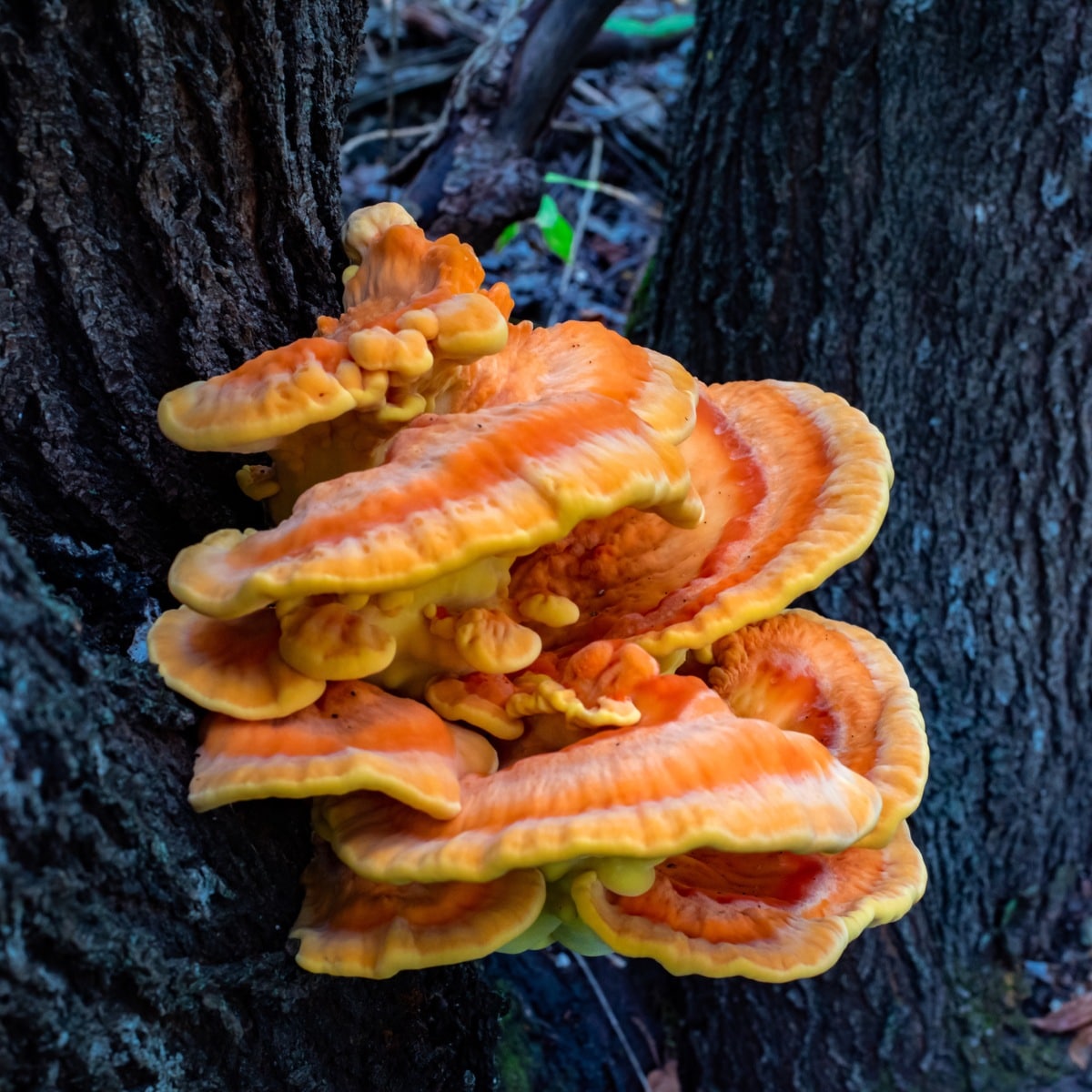
Lion’s Mane (Hericium erinaceus)
Lion’s mane mushrooms resemble a white, shaggy lion’s mane or a pom-pom. They grow on hardwood trees like oak, beech, and maple during the cooler autumn months. Lion’s mane has a delicate, seafood-like flavor, often compared to crab or lobster. In addition to its culinary appeal, this mushroom has gained attention for its potential health benefits, including supporting brain health and reducing inflammation. When foraging for lion’s mane in New England, look for its cascading icicle-like “teeth” on dead or dying hardwood trees.
There are two other Hericium species in New England related to the Lion’s Mane, and they are also edible. These are Bear’s Head Tooth, the recently named state mushroom of Vermont, and Coral Tooth. They look quite similar to Lion’s mane, and many people call all three species by that common name. The primary difference between them is shape, as bear’s head tooth and coral tooth both have branching fruit bodies, while lion’s mane is mostly rounded.
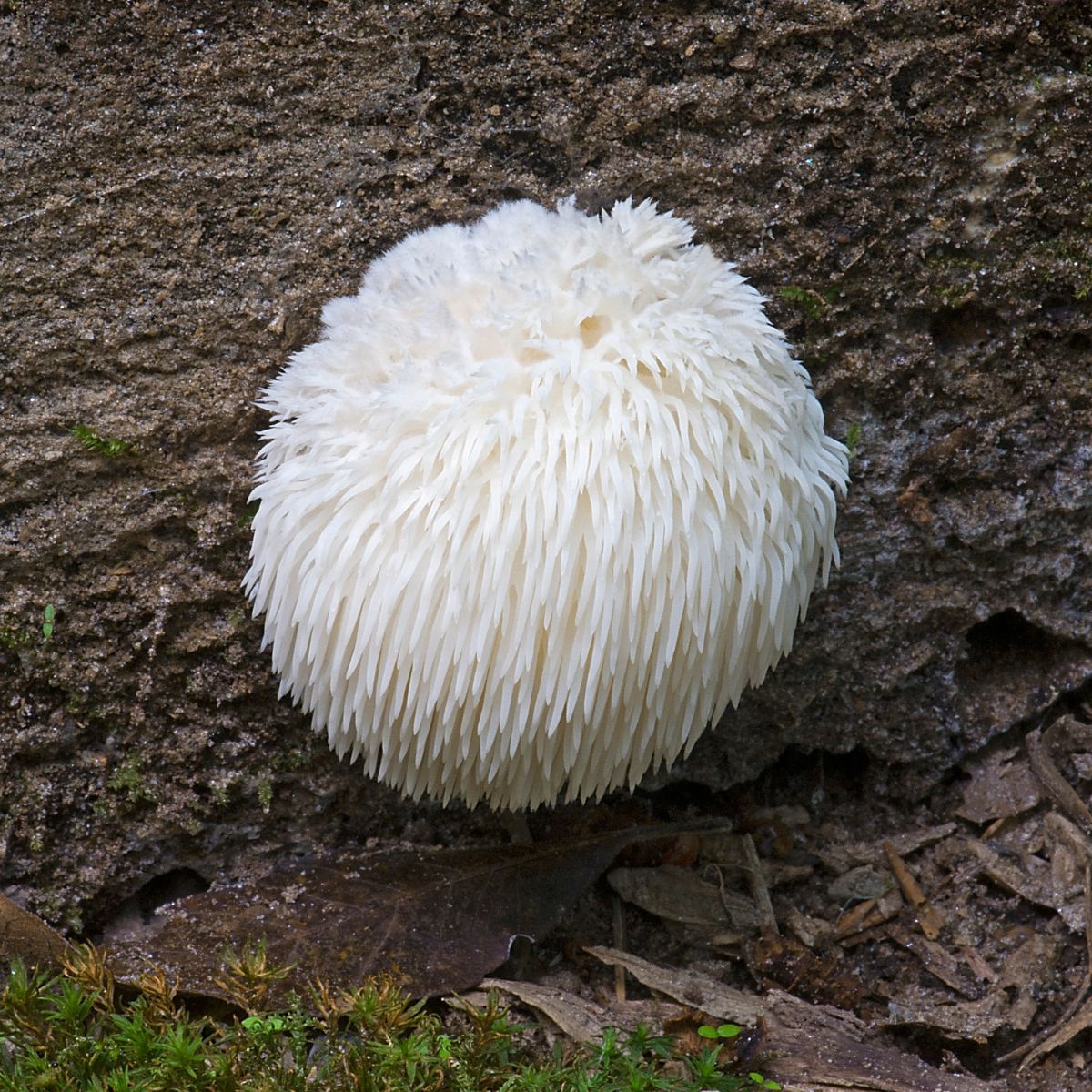
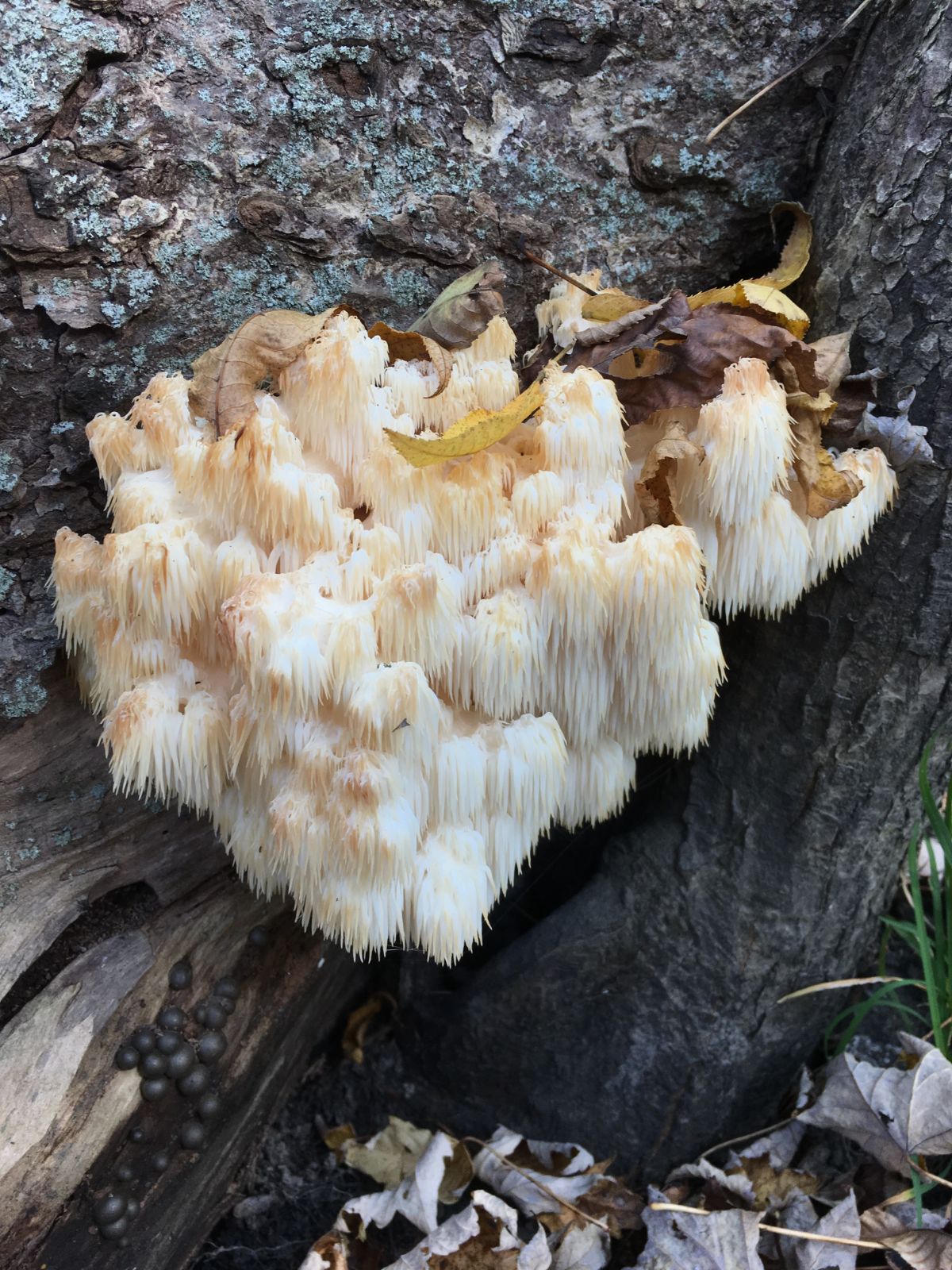
Puffballs
These round, white fungi are easy to identify, making them ideal for beginners. When foraging for puffballs, look for ball-shaped structures growing on the ground or on dead wood. A giant puffball looks like a volleyball lying in the middle of the yard or field. Smaller puffballs are the size of ping-pong balls. To make sure you have an edible puffball, cut it in half vertically. The interior should be pure white and spongy, with no signs of gills or discoloration. Puffballs are enjoyed for their mild, versatile flavor and ability to absorb other tastes. They can be prepared in various ways, from frying to grilling.
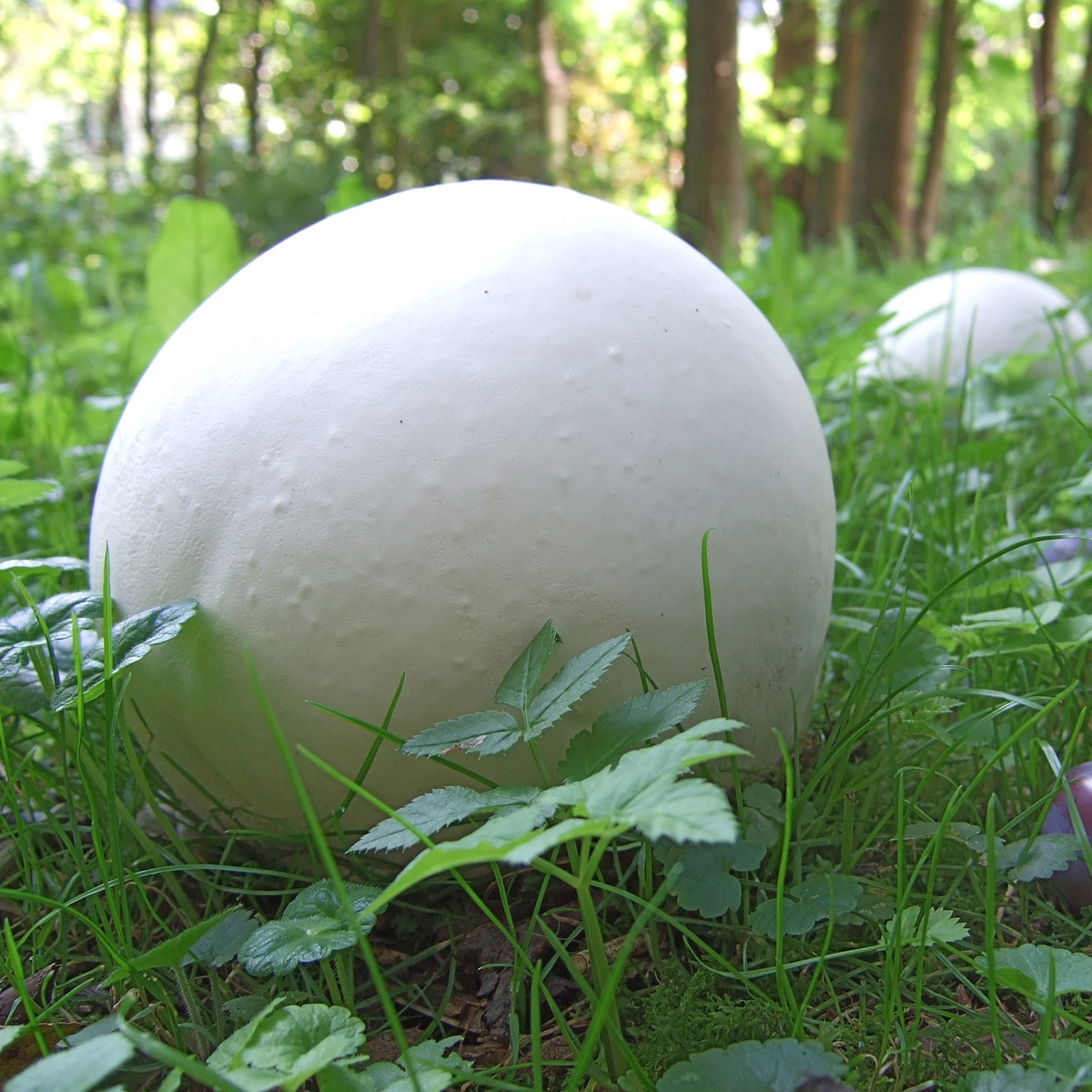
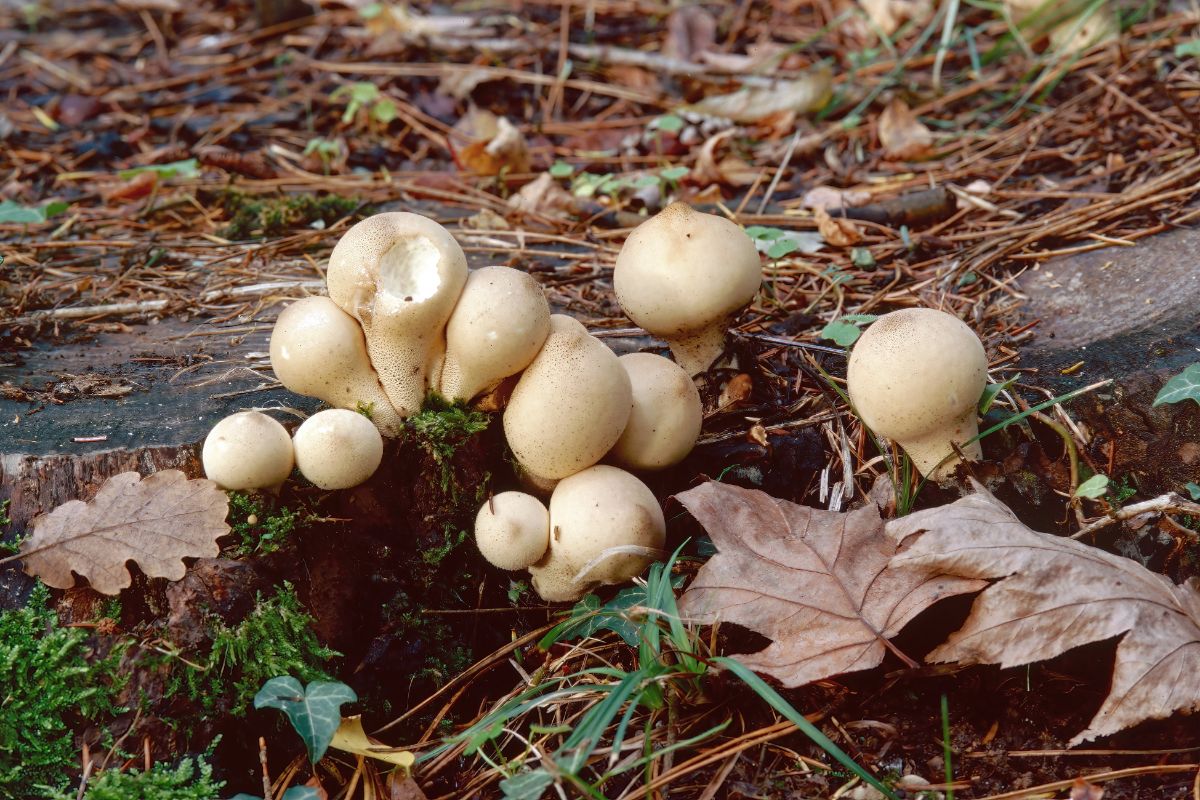
Honey Mushrooms (Armillaria species)
Honey mushrooms grow in clusters on dead or dying trees and often appear in huge numbers at the base of oaks and other hardwoods. Their caps range from golden-yellow to brown and have distinctive scales or tufts. When harvesting, focus on young, firm caps for the best flavor and texture.
Honey mushrooms are parasitic, so unfortunately, for any tree they are on, they are killing it. Honey mushrooms possess an extraordinary ability to spread underground through root-like structures called rhizomorphs. They infect and slowly kill living trees over vast areas, sometimes spanning several acres.
Honey mushrooms grow in clusters on wood. The caps range from 1 to 6 inches in diameter and are usually honey-colored but vary from pale yellow to reddish-brown. Their stems are 2 to 8 inches tall, often with a ring or collar just below the cap. The ringless honey mushroom doesn’t have this telltale ring around the stem but is recognizable by the other standard features.
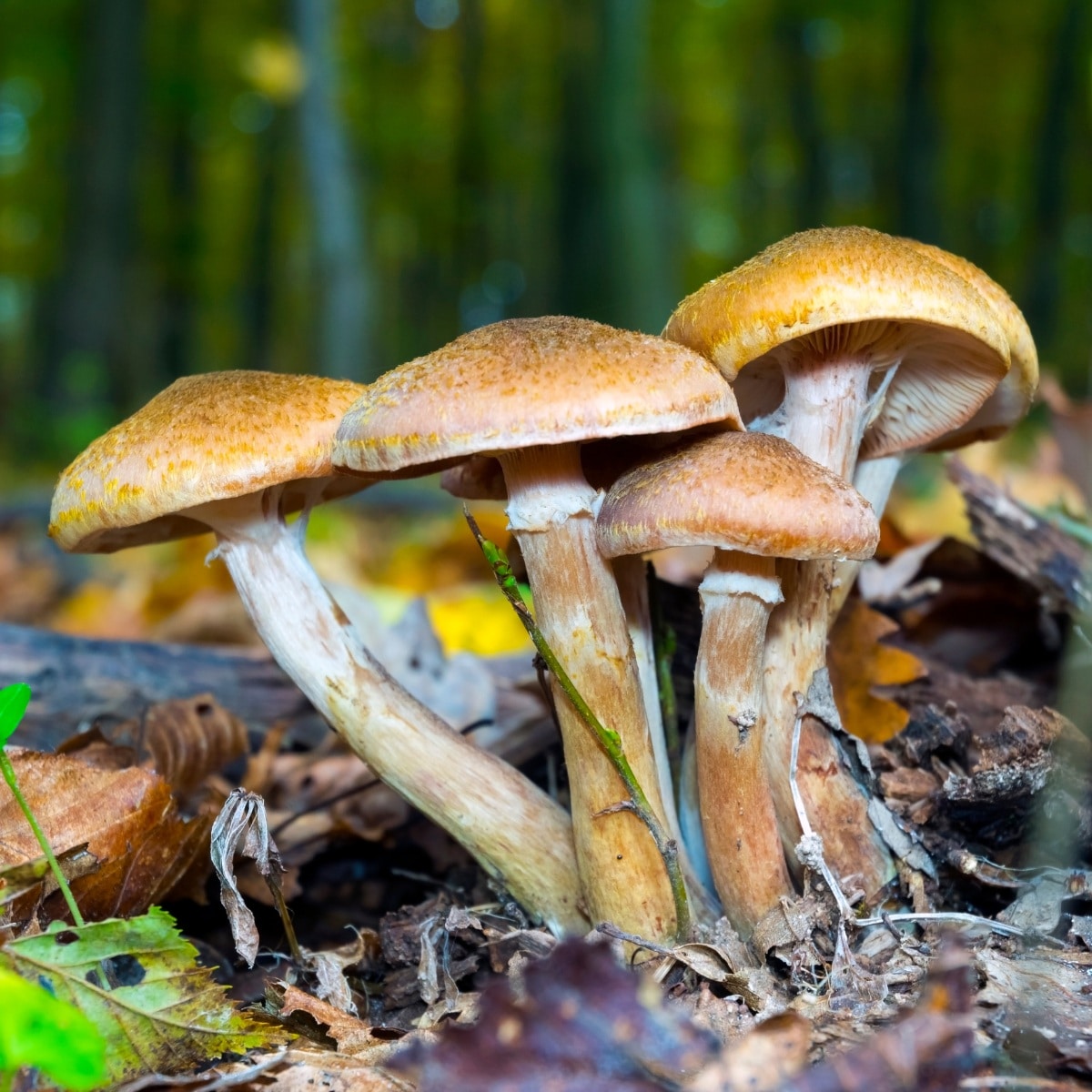
Shrimp of the Woods (Entoloma abortivum)
Shrimp of the Woods gets its name from its shrimp-like texture and mild seafood flavor. Foragers prize these lumpy, white masses that often appear at the base of trees or on decaying wood. Shrimp of the Woods has a unique parasitic relationship with honey mushrooms. The Entoloma parasite attacks the honey mushrooms and transforms them into white, lumpy bulbs. It’s not uncommon to see shrimp of the woods and regular, un-parasitized honey mushrooms around the same tree or stump. When foraging for this fall delicacy, look for popcorn-shaped growths around elm trees or in coniferous woods. They are delicious sauteed or roasted.
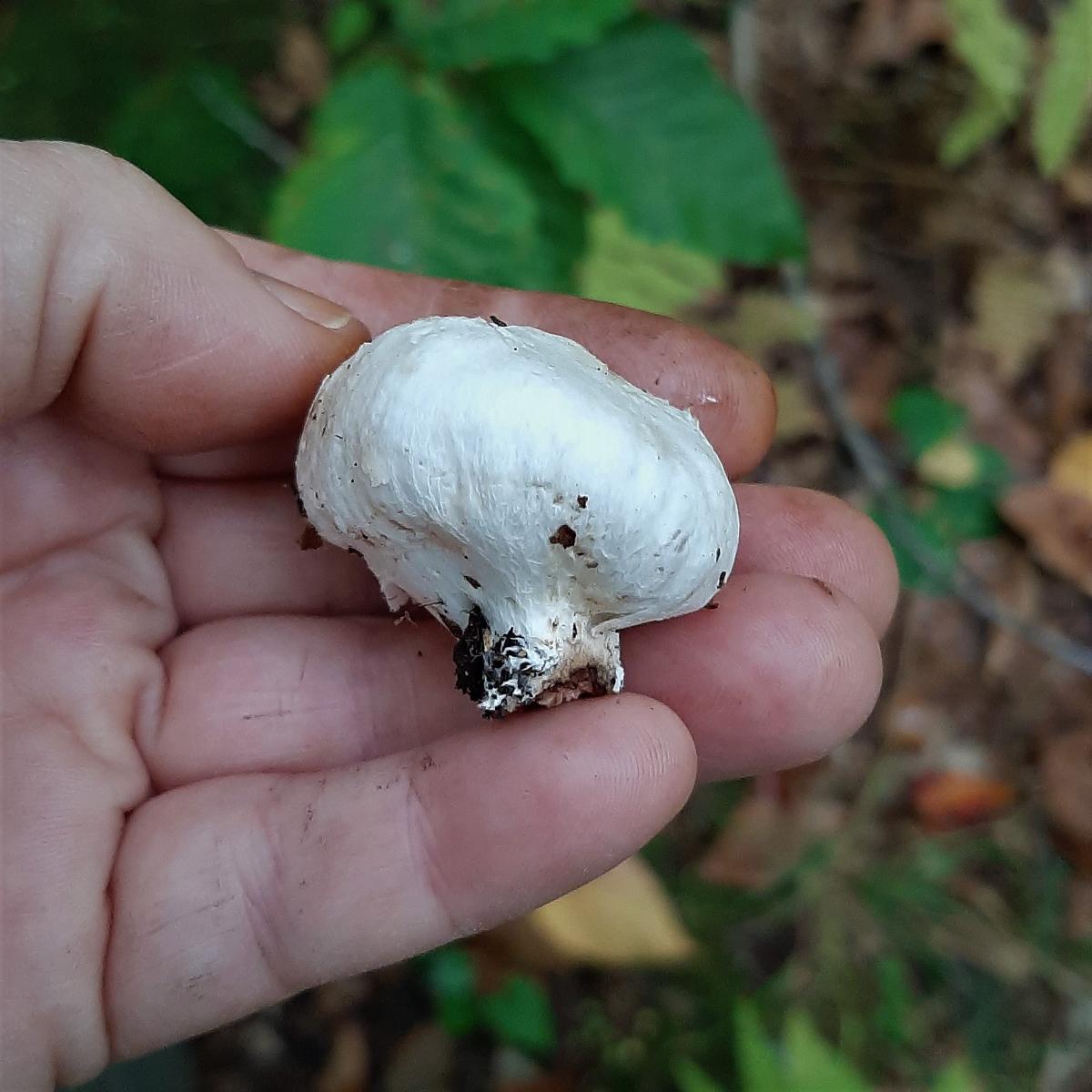
Wood Ear (Auricularia)
Wood ear mushrooms have a distinctive ear-like shape and a gelatinous texture. Wood ears grow on both hardwood and coniferous trees, often appearing in clusters. Their color ranges from light to dark brown and sometimes appears almost black when dried. These mushrooms are appreciated for their crunchy texture and ability to absorb flavors in cooking. Wood ears are commonly used in Asian cuisine, particularly in soups and stir-fries. When foraging for wood ears during fall mushroom season, look for their characteristic rubbery texture and ear-like appearance on dead or dying trees.
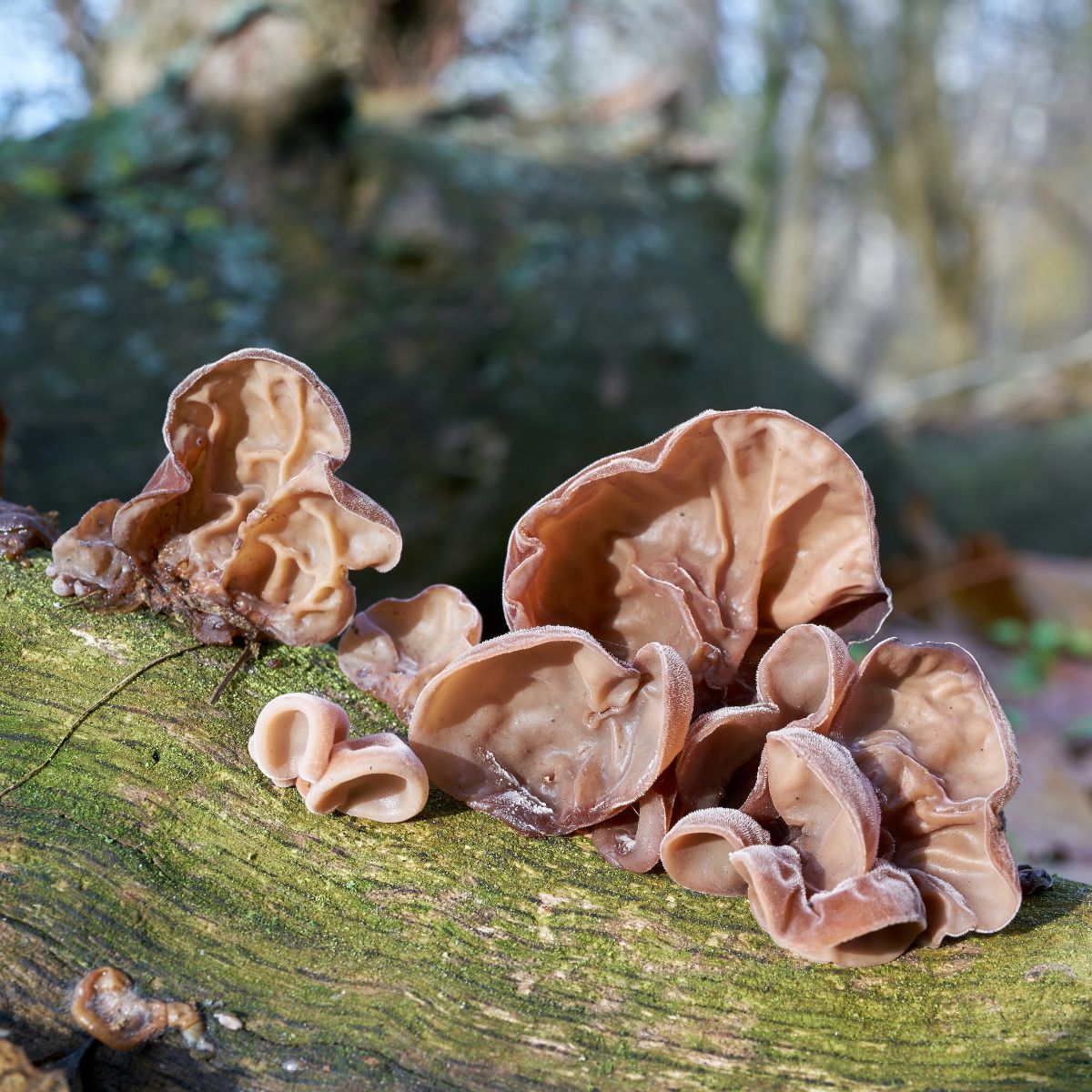
Turkey Tail (Trametes versicolor)
Turkey tail mushrooms grow in colorful, fan-shaped clusters on dead or dying hardwood trees. They have bands of varying colors, including browns, grays, and even blues and purples. Turkey tail mushrooms are foraged for their medicinal properties, particularly their immune-boosting effects. They contain polysaccharopeptides, which have shown potential in supporting cancer treatment and enhancing gut health. When foraging for turkey tails in New England, look for thin, leathery bracket mushrooms with a porous underside. The topside should be slightly fuzzy, too.
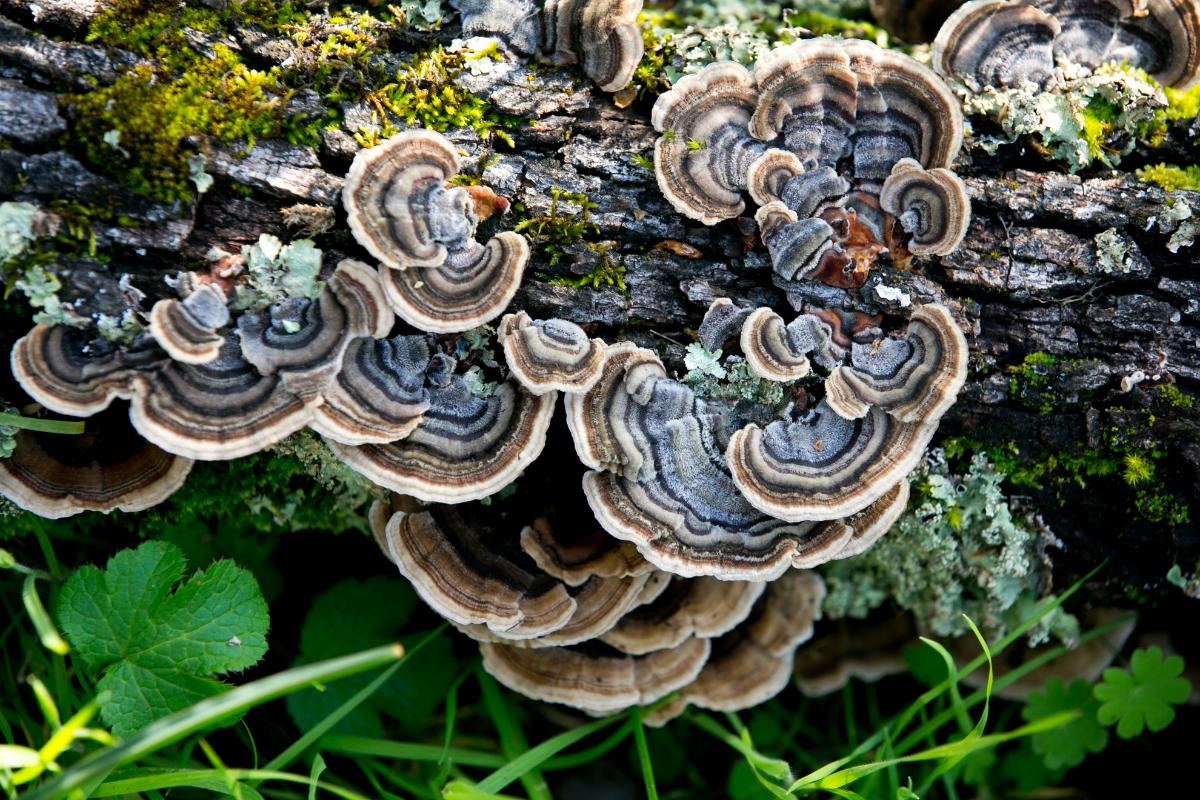
Matsutake (Tricholoma sp.)
Matsutake, also known as pine mushrooms, grows in coniferous forests. They form symbiotic relationships with pine tree roots. Their unique aroma, reminiscent of cinnamon and pine, or dirty socks mixed with cinnamon hots, is a key identifying factor. Matsutake mushrooms thrive in sandy soil under pine trees and are often hidden beneath fallen needles. Their caps, stems, and gills are all white, and the flesh is very dense. Finding Matsutake usually takes quite a bit of searching and a deep understanding of their ideal habitat; they’re one of the rarer fall mushrooms in New England.
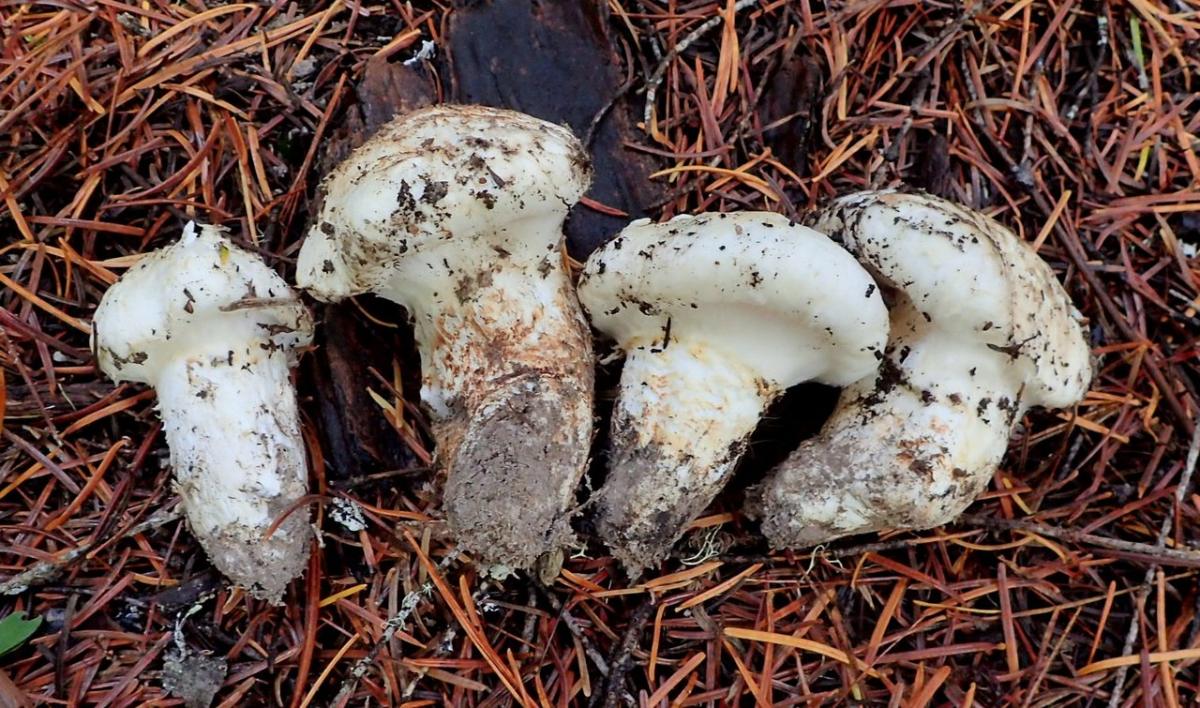
Lobster Mushrooms (Hypomyces lactifluorum)
Lobster mushrooms are actually the result of a parasitic fungus, Hypomyces lactifluorum, infecting other mushroom species, Russula or Lactarius. The infection transforms the host mushroom completely. It goes from a traditional-looking mushroom with gills and stems to a bright orange-to-red color and a hard, textured exterior resembling a cooked lobster shell. Lobster mushrooms are esteemed for their firm texture and subtle seafood-like flavor. They grow on the forest floor, often near coniferous trees like hemlock and Douglas fir. When foraging for lobster mushrooms during fall mushroom season, look for their vibrant color peeking through the leaf litter. They do like to hide!
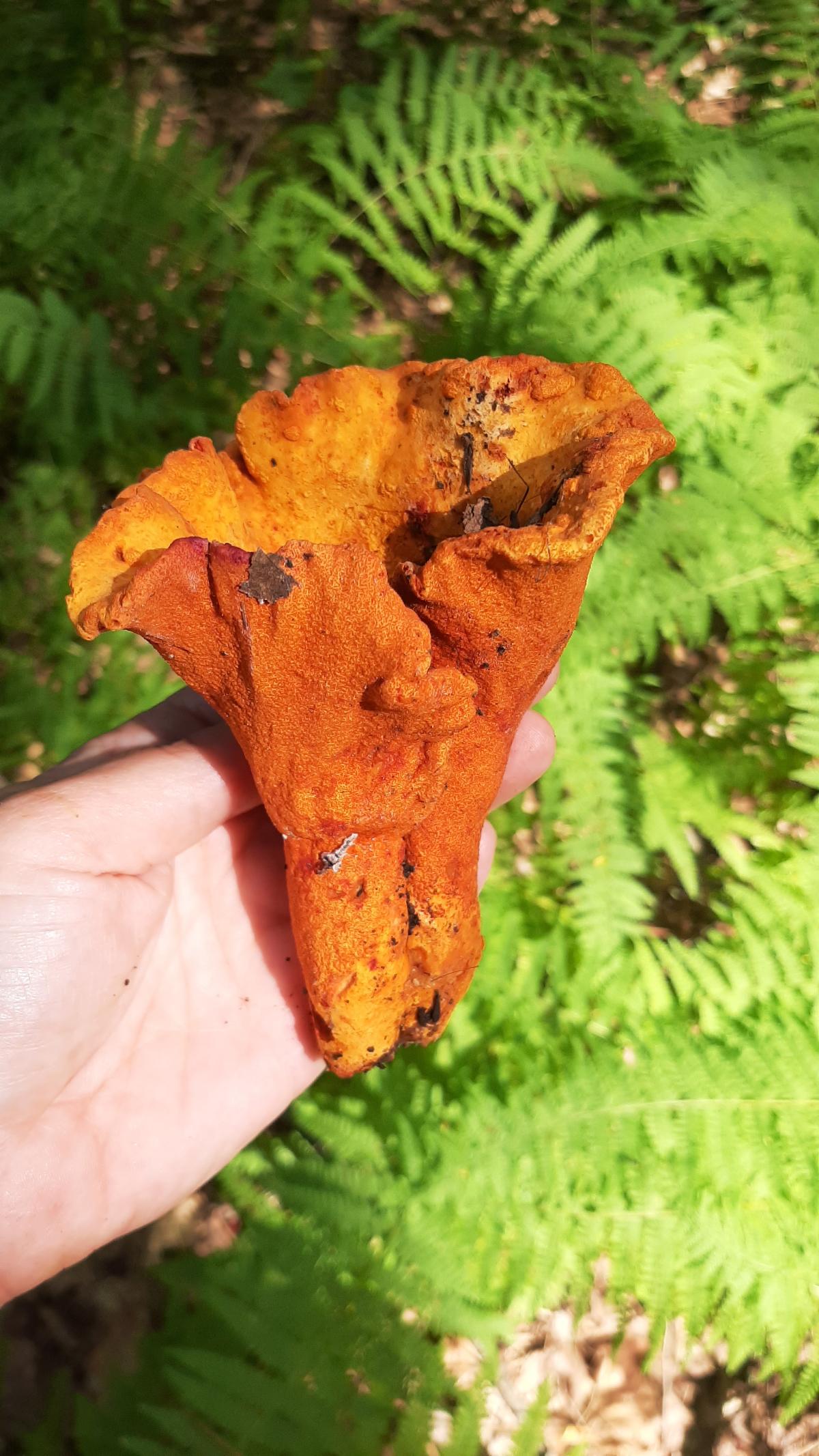
Hedgehogs (Hydnum species)
Hedgehog mushrooms are identifiable by their unique spines or teeth under the cap instead of gills. Their pale cream to salmon-pink caps blend in with the forest floor and can be easily overlooked. But they are among the tastiest fall mushrooms with a firm texture and mild, nutty flavor. Finding them is a treat. Hedgehog mushrooms thrive in mixed conifer forests, often near water sources. They are pretty resistant to insects and decay, which is great for mushroom hunters! Hedgehogs can be sautéed, grilled, or added to soups and stews.
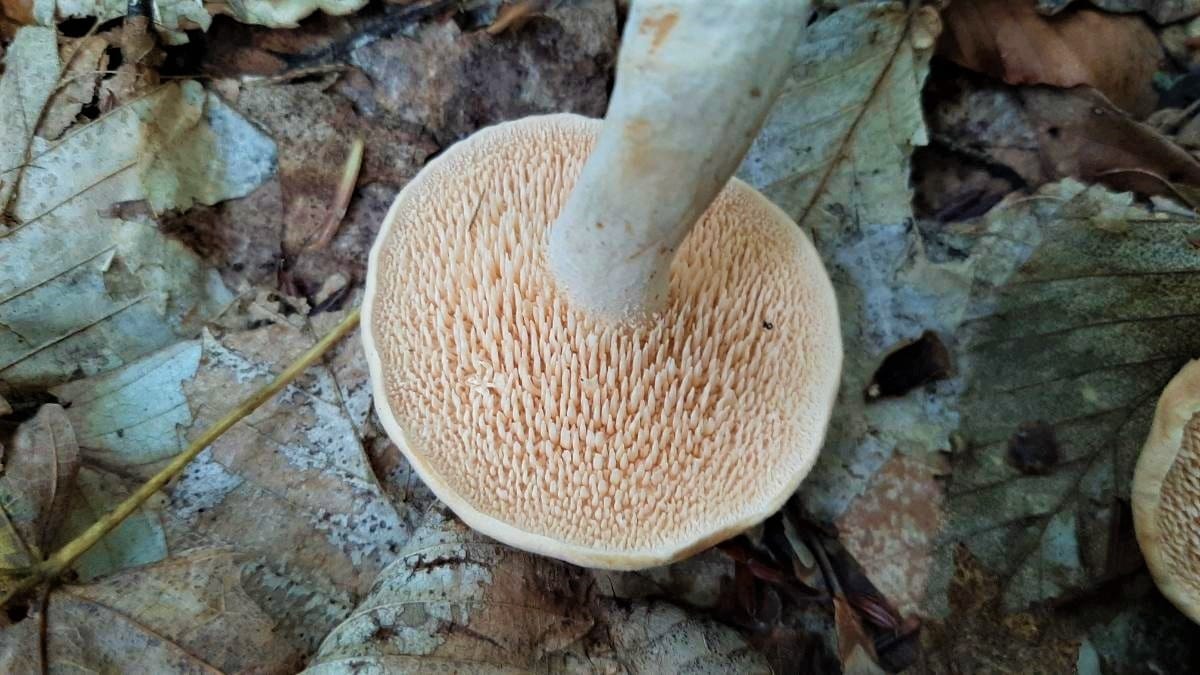
King Bolete (Boletus edulis)
King boletes, also known as porcini, are large, stately fungi that have thick, club-shaped stems and dense caps that resemble bread buns. King boletes thrive in coniferous forests and are often found near spruce and hemlock trees. When foraging during fall mushroom season, look for their tan to reddish-brown caps on the forest floor. They can blend in with the fall leaves, so look diligently. King boletes have white pores that turn yellowish-green with age. Their flesh remains white when cut, which is a key identifying feature. These edible mushrooms are renowned for their nutty, meaty flavor which works well in many dishes.
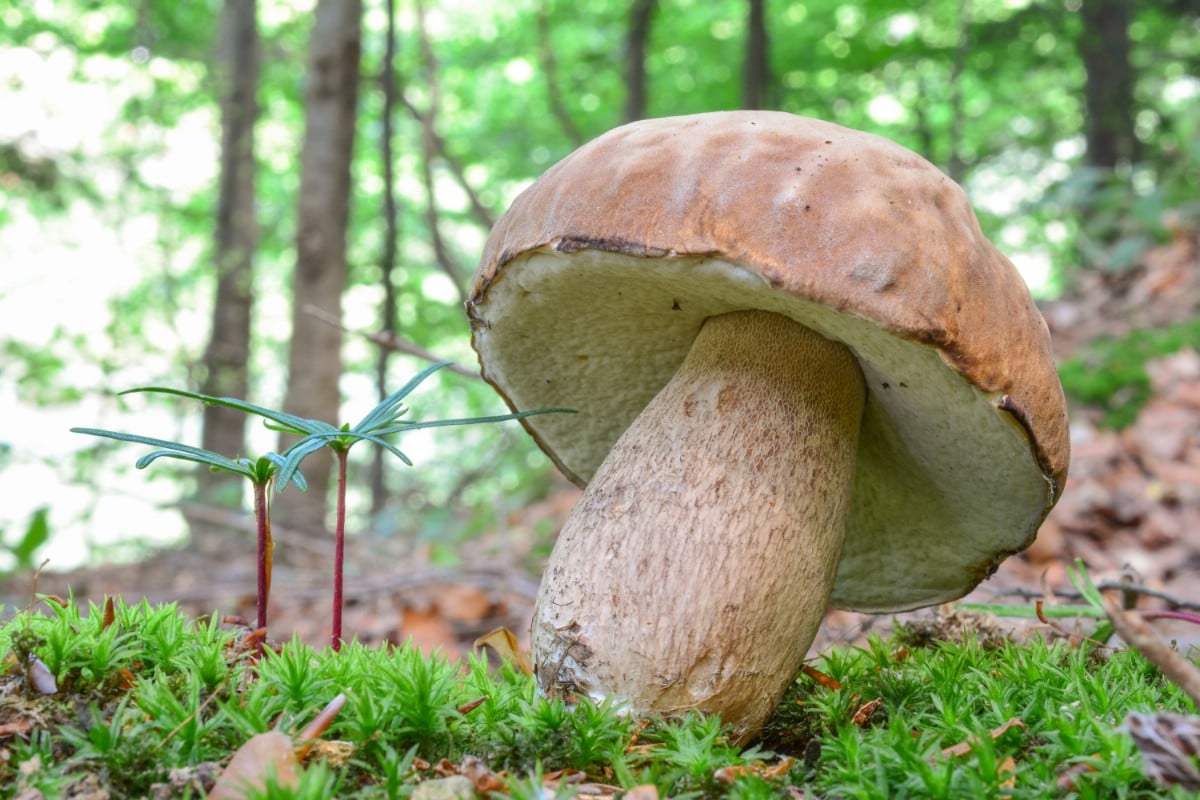
Shaggy Mane (Coprinus comatus)
Shaggy mane mushrooms, also known as lawyer’s wigs or shaggy ink caps, are tall, cylindrical mushrooms with caps covered in shaggy scales. Shaggy manes often grow in disturbed areas, such as lawns, roadsides, and wood chip piles — many people find them growing in their yards or landscaped areas. When foraging for shaggy manes, look for their characteristic white, elongated caps and pay close attention to the details. There are several potential problematic lookalikes, and you must be diligent in identifying them. These mushrooms have a delicate flavor and versatility in cooking. However, they require quick harvesting and preparation (same day!), as they rapidly dissolve and turn into black, goopy ink.
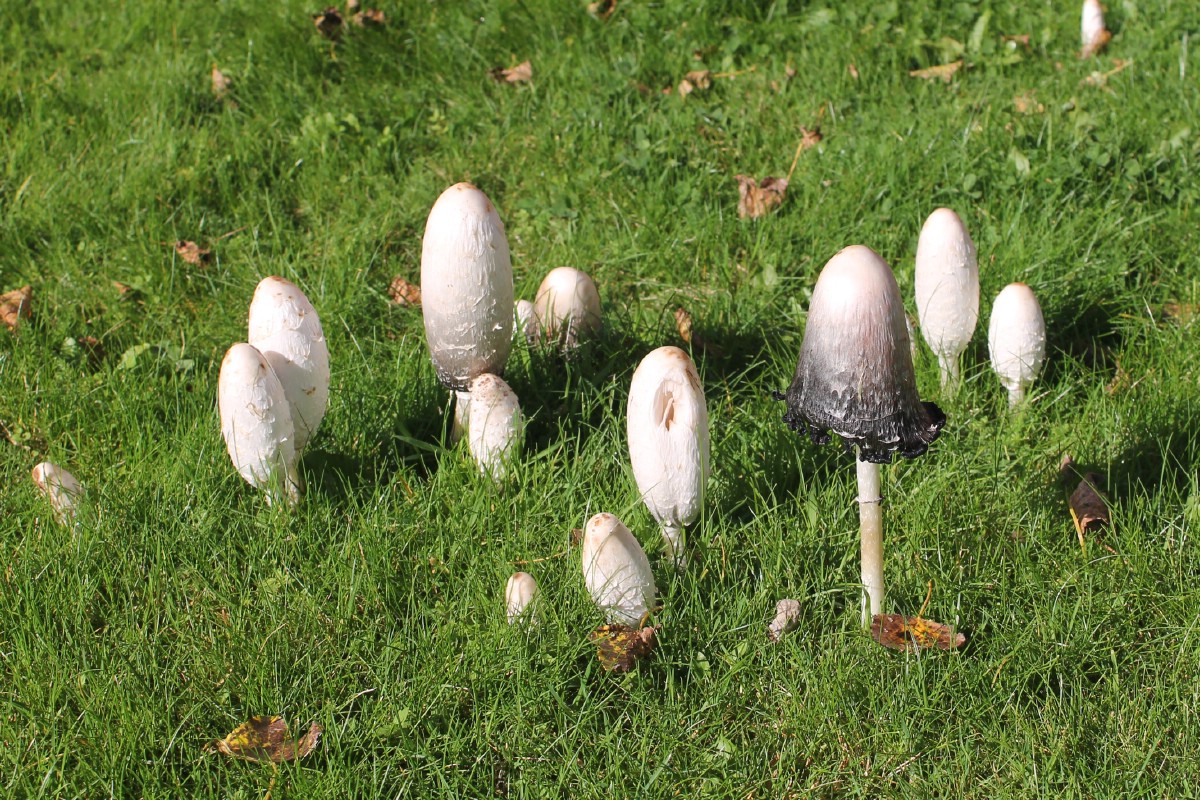
Velvet Foot (Flammulina velutipes)
Velvet foot mushrooms thrive in cold weather, often fruiting from late November through March. Their distinctive appearance features shiny, reddish-brown caps with lighter edges and a unique velvety stem. Velvet foot mushrooms grow in clusters on hardwood stumps and logs, often with many bunches on one log. They do have a dangerous lookalike, so be extra careful identifying these mushrooms for the table. Velvet foot mushrooms have a delightful buttery-nutty flavor and meaty texture and are perfect for sautéing, roasting, or grilling.
Fun Fact — this is the exact same mushroom as the Enoki you buy in the grocery store. They look completely different because they are grown differently — cultivated Flammulina velutipes is grown in tall jars with minimal light. This makes them grow tall, and the lack of light makes them white. Wild Flammulina velutipes is brown and short.
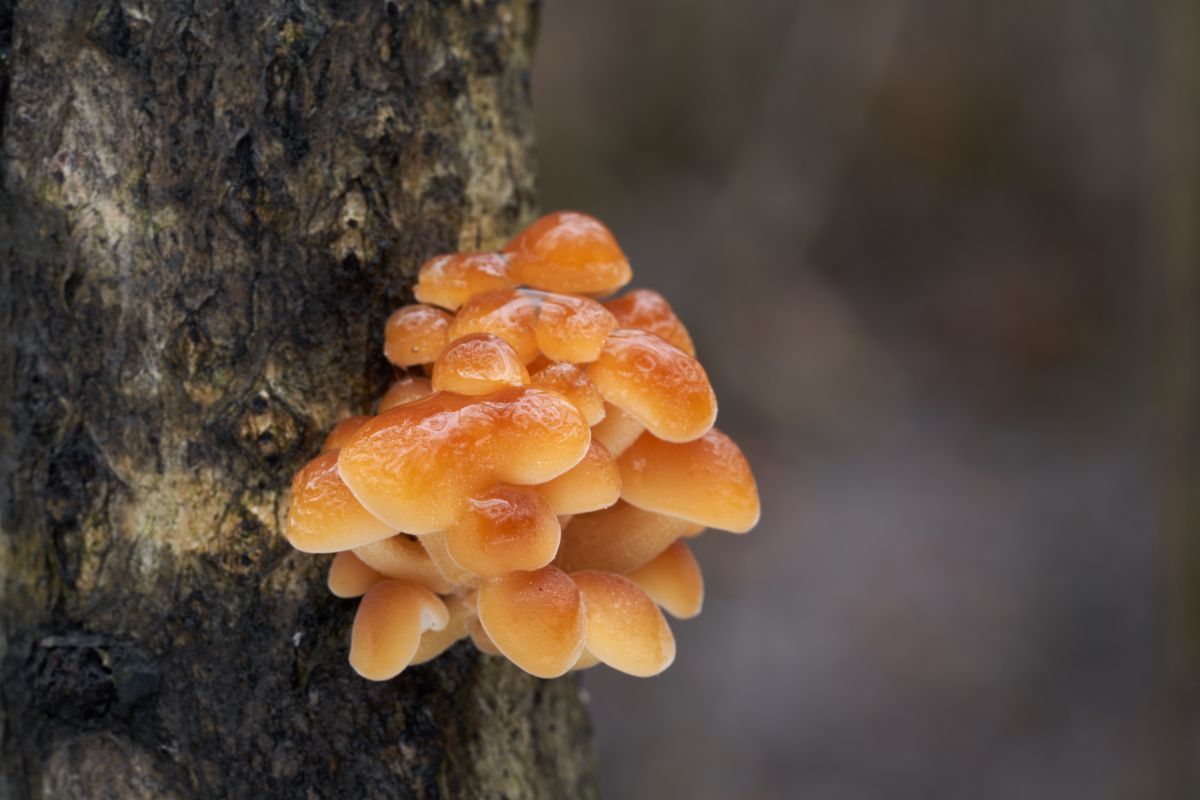
Mushroom Foraging Resources
If you’re new to mushroom foraging, here are some great guides to get started: How To Be A Successful Mushroom Forager, Mushroom Foraging 101, and Mushroom Identification Pictures and Examples.
This guide to the best identification books by region will help you find the best guides for you.
Curious about fall foraging in other areas? Check out our guides for across the US:
- Fall Mushroom Foraging in the Southeast
- Fall Mushroom Foraging in the Pacific Northwest
- Fall Mushroom Foraging in the Midwest
- Fall Mushroom Foraging in Southwest
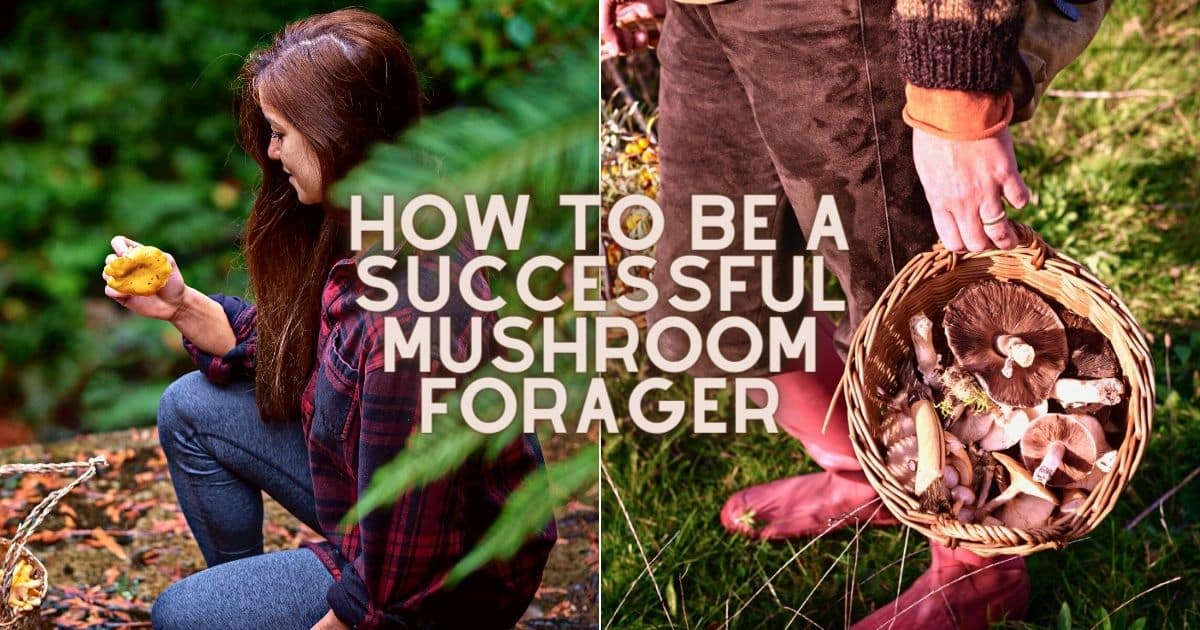





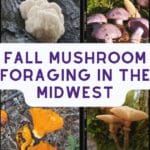
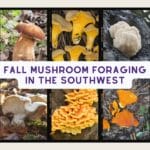
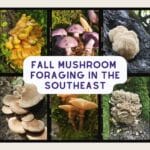
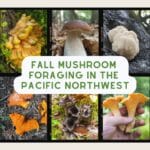
Robin S says
Wonderful site, beautiful pictures and detail explanation of the mushroom type.Bravo!